Being the most widely available on Earth, it’s only normal that aluminum has a wide range of uses in manufacturing and part production. However, is its only its abundance that attributes to its widespread use? Definitely not! Aluminum has a very high strength-to-weight ratio, higher even than steel. Combined with its great ductility and machinability, the use of different types of aluminum in many industries is quite justified.
Just as mentioned above, there are different aluminum grades, with each having different properties. Hence, this article will as a material selection guide. First, it will discuss the different types of aluminum grades, the uses of aluminum, and its properties. It will also cover the types of prototype machining processes each aluminum grade is suitable for. Then, read to the end to find out the easiest way to pick the best aluminum grade for part production.
Properties of Aluminum
Physical Properties of Aluminum
Aluminum in its pure form is a very soft metal. It, however, has alloys with excellent strength. Combined with the relatively low density of aluminum, aluminum alloys possess the highest strength-to-weight ratio of metals. Aluminum alloys are also resistant to low temperatures and corrosion.
Thermal and Electrical Properties of Aluminum
Aluminum has great thermal conductivity, making it suitable for the manufacture of heat exchange parts in automobiles. In addition, some alloys of aluminum are electrically conductive or resistive, which means wires consist of alloys while others find use in situations where there is a need for electrical resistivity.
Mechanical Properties of Aluminum
Depending on the aluminum grade, it can have very high or very low tensile strength. For example, some grades of aluminum have tensile strengths as high as 100ksi or as low as 1.5ksi.
Reflectivity of Aluminum
Aluminum can have a highly reflective surface by polishing it. This makes aluminum great for reflecting radiant energy, an important characteristic for light fixtures and decorative fittings.
Pros and Cons of Aluminum in Machining
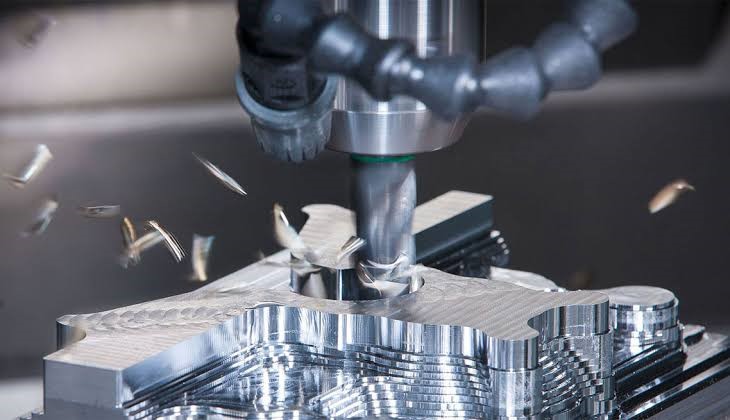
Aluminum isn’t one of the most widely used metals for no reason. It’s got characteristics that make it highly sought after in the machining industry. But, like all things good, aluminum has its advantages as well as disadvantages.
Pros of Aluminum in Machining
It is corrosion resistant
Aluminum resists corrosion and rust. The surface of aluminum alloys oxidizes rapidly, giving it a protective layer of aluminum oxide, which helps resist corrosion by the elements. With good finishing and healthy maintenance, aluminum can remain corrosion-free even in the worst conditions. This property of aluminum makes it suitable for use for parts to experience exposure to harsh environmental conditions.
It is economical
The production costs of aluminum, although not the ultimate cheapest, are inexpensive relative to its advantages. This means it is cheaper than other metals that offer the same advantages, and therefore the ideal choice for most use cases.
It is strong and lightweight
Aluminum is exceptionally strong, being the metal with the highest strength to weight ratio. This makes it applicable in parts where there’s a need for exceptional strength. As is evident from the high strength to weight ratio, this strength doesn’t come at the cost of weight. With a density almost three times less than steel, aluminum alloys are suitable for machine parts that need to be as light as possible while retaining great strength.
It is recyclable
Aluminum is a hundred percent recyclable. Aluminum also requires less energy to recycle than many other metals, making it an eco-friendly material choice.
It is suitable for rapid tooling manufacturing
Rapid tooling manufacturing is a manufacturing method that has gained traction due to its cost-saving and faster lead time advantages. One of the foremost materials used in rapid tooling is aluminum. Due to its high ductility and affordable cost, it is easy to see why aluminum alloys are manufacturers’ favorite.
It requires little maintenance
Aluminum parts retain their quality and properties even in the worst conditions. This makes them a good choice for parts that are difficult to reach for routine maintenance. Aluminum can also resist very low temperatures without cracking or failing.
It is customizable
Due to its great machinability, aluminum can take almost any shape. Aluminum also holds paint well, and its surface can hold a vast majority of finishes successfully.
Cons of Aluminum in Machining
It conducts electricity readily
This could be an advantage as well as a disadvantage depending on where it is to be used. However, it makes aluminum alloys unusable in certain situations where electrical resistance is of importance.
It has a low melting point
Due to its low melting point, aluminum is unsuitable for use in areas with a high heat level. However, there are types of aluminum that fix this issue.
Grades of Aluminum Alloys
Aluminum alloys can be grouped into two major classes, cast alloys and wrought alloys.
Wrought Alloys
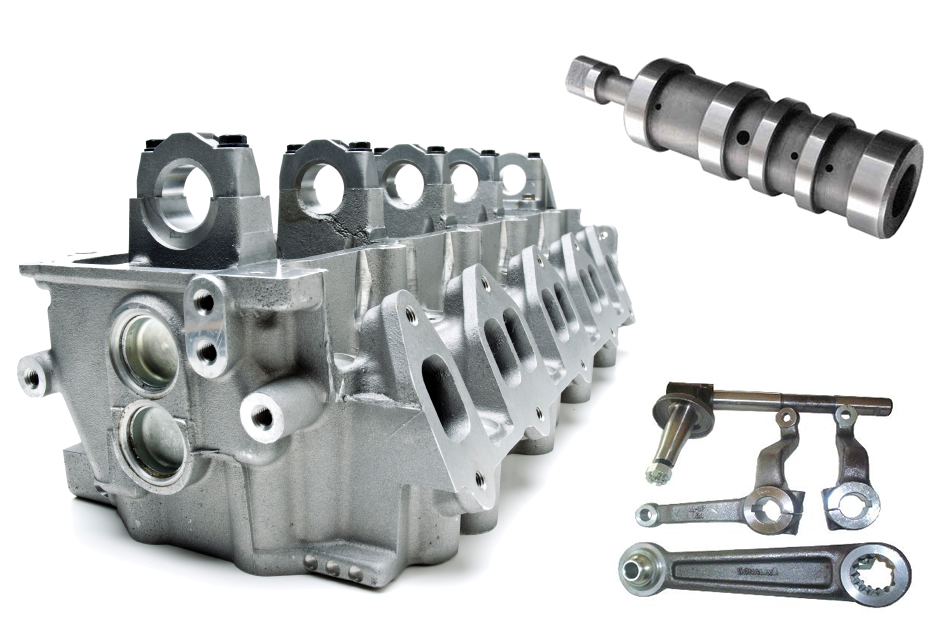
These aluminum alloys generally have greater strength than cast alloys. They also have a four-digit system, although without the decimal point. Just like the cast iron designation, the first number indicates the primary alloying element. If it is non-zero, the second number refers to an alteration to the alloy, while the last two digits identify the specific alloy in the series. There are seven series of wrought alloys as listed below:
1xxx series
These aluminum alloys must have 99% aluminum content, and they are therefore often referred to as pure aluminum. They have low strength and machinists select them for use based on their excellent corrosion resistance and electrical conductivity. They are also weldable, but machinists take great care needs to while welding them because of their low melting points.
2xxx series
This series has copper as its major alloying element. A solution heat-treatment procedure is the best way to treat these alloys. As a result, alloys in this series possess exceptional strength and hardiness but lack the corrosion resistance of other alloy series. Due to this, machinists usually paint or coat them in a corrosion-resistant alloy when their application is in a high corrosion environment.
3xxx series
These alloys have manganese as their primary alloying element. They possess moderate strength but have excellent heat and corrosion resistance. This makes them extremely suitable for use as cooking utensils. Exchange parts of vehicles and power plants are examples of common areas of application of these aluminum series.
4xxx series
Alloys in the 4xxx series have low melting points, making them suitable for use as filler materials when welding. Combining aluminum with silicon forms metal in these series.
5xxx series
These are the non-heat-treatable aluminum alloys with the greatest tensile strength. They are formed with magnesium as the primary alloying element. As a result, they possess great corrosion resistance and are easily weldable, making them a good choice for marine vehicles and equipment parts. In addition, they possess ultimate tensile strengths, which range from 18ksi to 51ksi.
6xxx series
Alloys in this series are exceptionally resistant to corrosion. They possess ultimate tensile strengths ranging from 18ksi to 58ksi. The main alloying elements in this series are magnesium and silicon. These alloys can serve as plating material for metals that are susceptible to corrosion. In addition, the magnesium and silicon content of these alloys leads to the production of magnesium-silicide, which enables it to receive solution heat treatment, further strengthening it.
7xxx series
These aluminum alloys use zinc as a primary alloying agent. They possess some of the greatest tensile strengths of all aluminum alloys, with tensile strength ranging from 32 to 88ksi. Machinists use metals in this series to manufacture parts of machines and equipment that will undergo high stress, such as aerospace and sports equipment. Other elements such as copper can also be added to tweak the properties of this series of wrought cast aluminum.
Cast Alloys
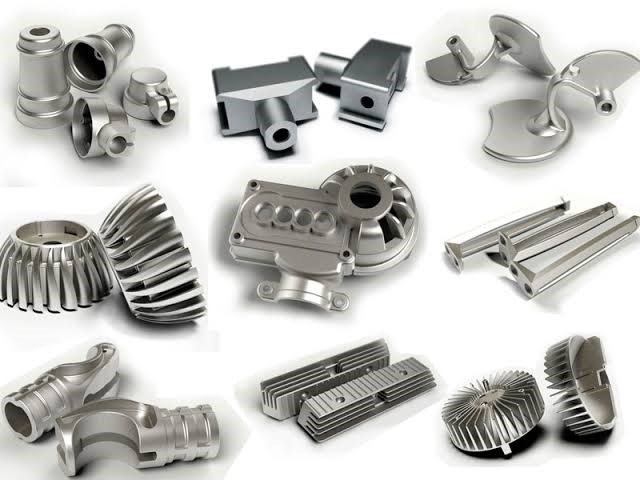
These can be either heat-treatable or non-heat-treatable. They use a four-digit system with a decimal point before the final digit. This first digit tells us the major alloying element. The next two digits identify the alloy, while the number behind the decimal point tells us if it is an ingot or a casting.
Differences between Cast and Wrought alloys
- Cast alloys generally possess lower tensile strengths than wrought alloys because of how difficult it is to eliminate defects that arise in the casting process.
- Cast alloys cost less per kilogram than wrought alloys.
- Wrought aluminum alloys have easier machinability than cast alloys.
- Parts machined from wrought aluminum alloys can be giving better surface finishes than those machined from cast alloys.
Commonly Used Types of Aluminum
Aluminum 6061-T6
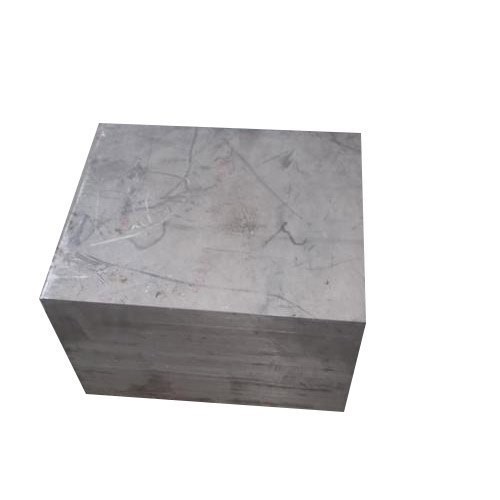
As you can tell from the name, this aluminum alloy belongs to the 6xxx series. The second digit is a zero, and this tells us that this alloy is commercial aluminum with all its impurities. The last two digits, 61 indicate the composition of this particular alloy (97.9% aluminum, 0.6% Silicon, 1.0% Magnesium, 0.2%Chromium, and 0.28% Copper). T6 means it has been solution thermally treated and aged. 6061 aluminum has a yield tensile strength of 40 ksi and an ultimate tensile strength of 45 ksi. This means that this aluminum has high strength and is suitable for even structural applications. 6061 aluminum is also corrosion-resistant. It finds use mostly in parts for heat exchangers, electronic equipment, and vehicles.
Aluminum 7075-T6
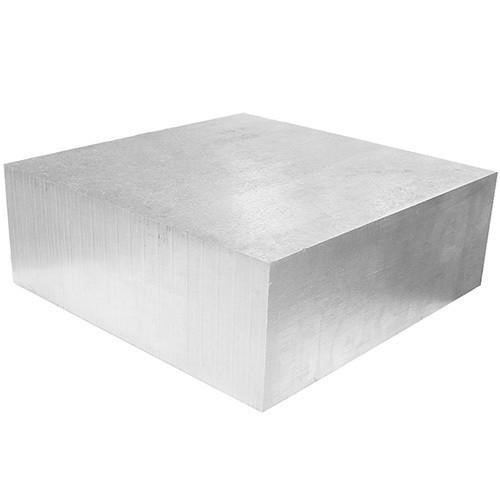
7075 aluminum is of the 7xxx series, indicating that it uses zinc as its primary alloying element and has high tensile strength. 90% of this alloy is aluminum, 5.6% is zinc, 2.5% is manganese, 0.23% is manganese, and 1.6% is copper. With a relatively light density of 2.81g/cm3 and an ultimate tensile strength of 83 ksi, 7075 aluminum is one of the strongest and lightest alloys of aluminum available. The T6, of course, means it underwent thermal treatment. Machine gears and aircraft fittings use this alloy.
Aluminum 5052
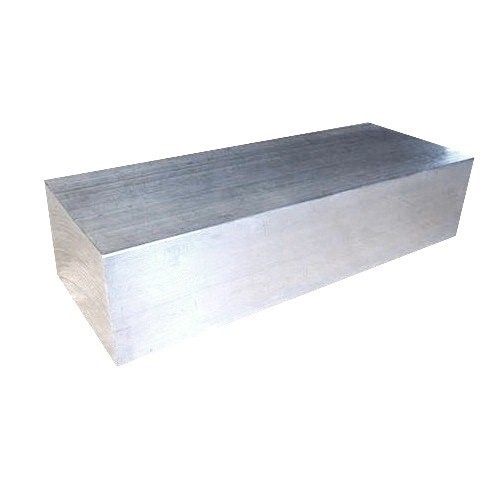
5052 aluminum is moderately strong and offers excellent corrosion resistance. Because it doesn’t contain any copper, it is exceptionally useful in saltwater applications. It is worthy to take note that this alloy is of the 5xxx series and is therefore not heat treatable. Parts machined from this alloy are often for marine equipment.
Aluminum 6063
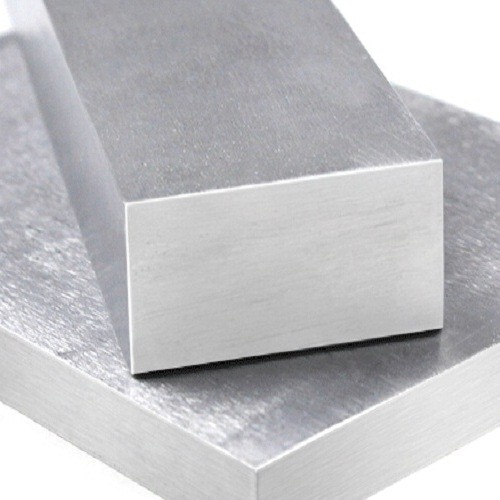
6063 aluminum, often referred to as architectural aluminum, is a magnesium-silicon alloy of aluminum. This alloy is of moderate strength and is highly ductile, which makes it suitable for die forming. The presence of magnesium-silicide and its low copper content makes it very corrosion resistant and therefore suitable for exposed usage. Parts machined from this aluminum find use in architectural products, pipes and tubings, and furniture.
How to Choose the Right Aluminum Grade
There are several types of aluminum grades to choose from. Different types of aluminum grades have different properties of weldability, strength, corrosion resistance, etc. You choose a grade based on the characteristics that are important to your particular use case. You should consider the following factors before making a choice.
Consider its Machinability Rating
The machinability rating of aluminum alloys will give an idea about their compatibility with CNC machining processes. An aluminum alloy with good machinability will be easy to cut and finish. This makes it suitable for producing intricate and complex machine parts. 2011 aluminum, for example, has excellent machinability.
What is its Cost and Availability?
The cost of the aluminum alloy is one of the foremost factors to consider when picking an aluminum grade for a project. Finding an intersection between your target cost and the most suitable properties at that price range will make a good foundation for a production process. Also, the price for the aluminum grade chosen will determine the availability of the aluminum grade. The availability will also matter a lot as a rare aluminum alloy might slow down the production process due to the difficulty involved in procuring it.
How Workable is the Aluminum Alloy?
This refers to how easily an aluminum grade can take on different shapes. Highly ductile alloys have very good workability and find use in cases where excellent fatigue resistance is paramount, such as aircraft parts.
Is It Weldable?
The weldability of an alloy is an important factor to consider if the part manufactured will have to be welded to other parts. For example, 3003 aluminum is a good choice if weldability is important.
Is It Resistant to Corrosion?
The location of use of a manufactured part determines if it needs to be resistant to corrosion or not. For example, parts made for marine or chemical applications must have excellent corrosion resistance.
Is It Heat Treatable?
Heat treatment is the use of extreme temperatures to temper aluminum alloys. Heat treatment helps to increase the strength of an aluminum alloy. You should note which types of aluminum series are heat treatable and which ones are not.
How Strong is the Alloy?
Strength determines how much stress an alloy can endure before it becomes deformed. Therefore, parts exposed to high stress naturally have to consist of high-strength aluminum alloys.
Applications of Aluminum
Aluminum is a metal with widespread applications in various industries. Below are a few examples of sectors where aluminum parts and products find widespread use:
Medical Sector

In an industry where cleanliness and biocompatibility are compulsory, aluminum parts and products have stepped up to the task. Medical instruments consist various types of aluminum, such as surgical and orthopedic instruments. In addition, some general-use equipment such as trays and containers also have aluminum as their main component
Aviation Industry
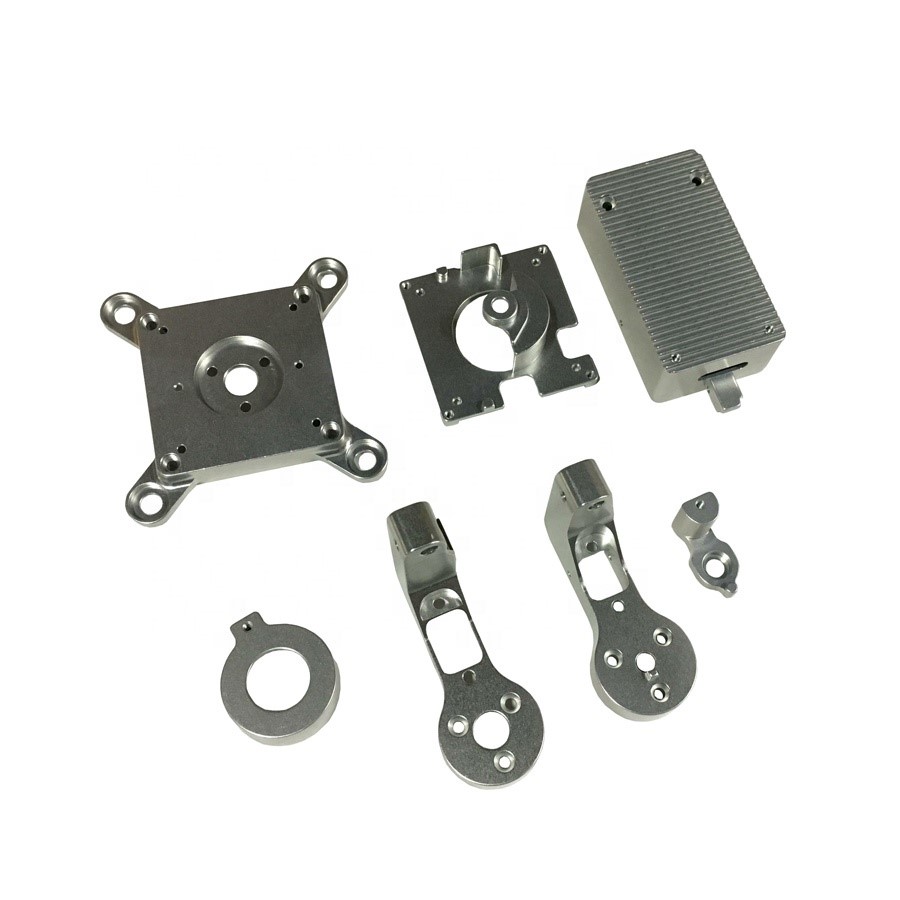
Aircraft require construction materials that are lightweight and strong. With the high strength-to-weight ratio of aluminum, it perfectly fits the bill. This attribute also ensures that it can carry just as much cargo as metals stronger than it. In addition, with its high corrosion resistance, it also helps to prevent the aircraft from getting damaged when exposed to harsh environmental conditions.
Electrical Industry
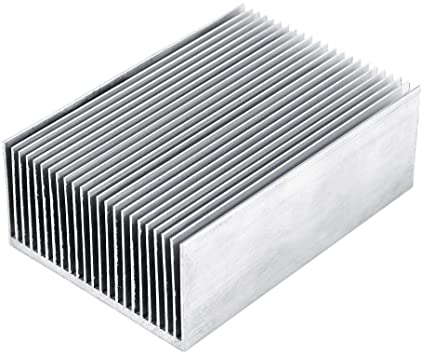
Manufacturers of consumer electronics constantly utilize aluminum alloys in their products due to their excellent heat conductivity. This attribute has been utilized in electrical components such as heat sinks and cooling components for graphic processors.
Automotive Industry
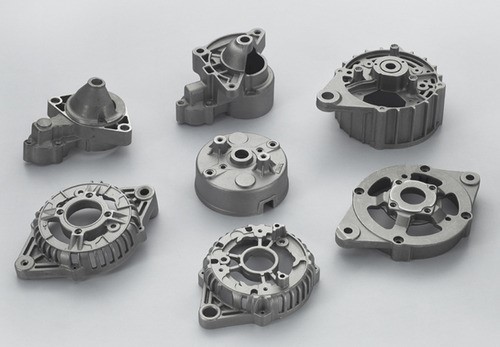
Ideal vehicles should be lightweight, durable, and environmentally friendly. Aluminum is a metal that can help achieve these goals. Due to its lightweight property and high level of durability, vehicles can be nimble while still maintaining their ruggedness. Also, the use of aluminum makes car parts recyclable, hence, improving the sustainability of cars using aluminum parts.
Conclusion
Aluminum is an extremely versatile metal and has different properties depending on which elements it is combined with. In addition, different types of aluminum have different characteristics, which makes them suited for use in different industries. However, due to the wide range of choices of aluminum alloys available at your disposal, you might find it hard to pick one for your prototype designing.
At RapidDirect, we offer professional advice on the best material for different machining projects. Reach out today to help solve your material selection dilemma.


